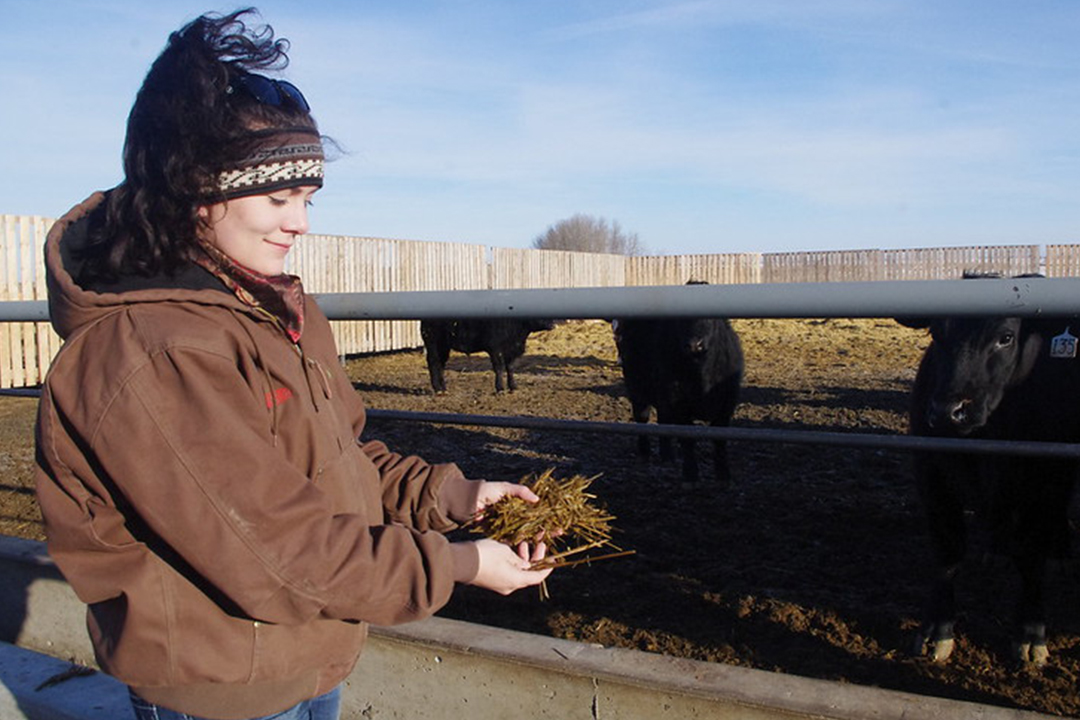
Improved triticale variety offers another option in crop rotation for cattle producers
Cattle producers looking for silage to rotate with barley may want to consider a newer variety of triticale, according to research conducted at the University of Saskatchewan.
By Lana Haight“There are always new varieties of cereal crops with claims that they improve gain and have higher feeding value. It’s important to do the research to find out if that really is the case,” said Brittany Ross, Master of Science candidate at USask’s College of Agriculture and Bioresources. She is supervised by animal scientist and professor Dr. Bart Lardner (PhD).
Ross completed the final two years of a three-year trial comparing Taza triticale, Bunker triticale and Austenson barley that was fed as silage to steers in the backgrounding stage, which is a slow growing stage for animals five to seven months old. Year three started in December 2018 when 300 freshly-weaned steers arrived at the Livestock and Forage Centre of Excellence’s Forage Cow-Calf Research and Teaching Unit south of Clavet, Sask. Each animal weighed approximately 250 kilograms. While the animals were divided into three groups and each group was fed one of the three silages, the feed was formulated to ensure all the animals were eating the same number of calories and ingesting the same amount of nitrogen.
The research examined crop yield potential, silage quality and steer average daily gain as well as an economic analysis.
A hybrid of wheat and rye, triticale is an attractive option for producers: it’s high-yielding, high in protein and tolerant to drought. On the negative side, older varieties of triticale are also known for “awns” or large hairs that may reduce the animals’ feed intake and potentially slow their weight gain. The Taza and Bunker varieties have fewer awns, prompting the interest in how they would fare as silage.
In the study, both varieties of triticale yielded 10 per cent more silage than the barley. The triticale seed cost about 50 per cent more than barley seed but because triticale had the higher yield, the actual cost of all three silages was about the same, with the triticale costing five cents per pound more on a dry-matter basis.
As expected, the animals in the study showed no difference in average daily weight gain, dry matter intake, dry matter intake as a percentage of body weight and feed efficiency. The steers fed triticale silage did not “sort” the feed, indicating the feed was a palatable as the barley silage.
Yet aside from the triticale’s higher yield, barley came out on top in the study because of it was higher in nutrients.
“The relative feeding value of barley silage was higher. Because it had lower fiber content, a lower neutral detergent fiber, the barley was more digestible and it had higher starch and energy content,” said Ross, who is working as an animal nutritionist at Coaldale Veterinary Clinic in Lethbridge, Alta.
In calculating the total cost of feeding the cattle for the three months in the backgrounding stage, Ross included cropping, silaging, feed and yardage.
Cost per head per day was lowest for Taza triticale silage fed steers at $2.03, followed by barley silage at $2.06 and Bunker triticale silage at $2.14. Total cost of gain for Taza, Bunker and barley fed steers was $1.35, $1.40 and $1.34 per kg of gain ($0.64, $0.67 and $0.63 per lb of gain), respectively.
Funding for the project came from the Saskatchewan Agriculture Development Fund and the Saskatchewan Cattlemen’s Association Industry Development Fund.

